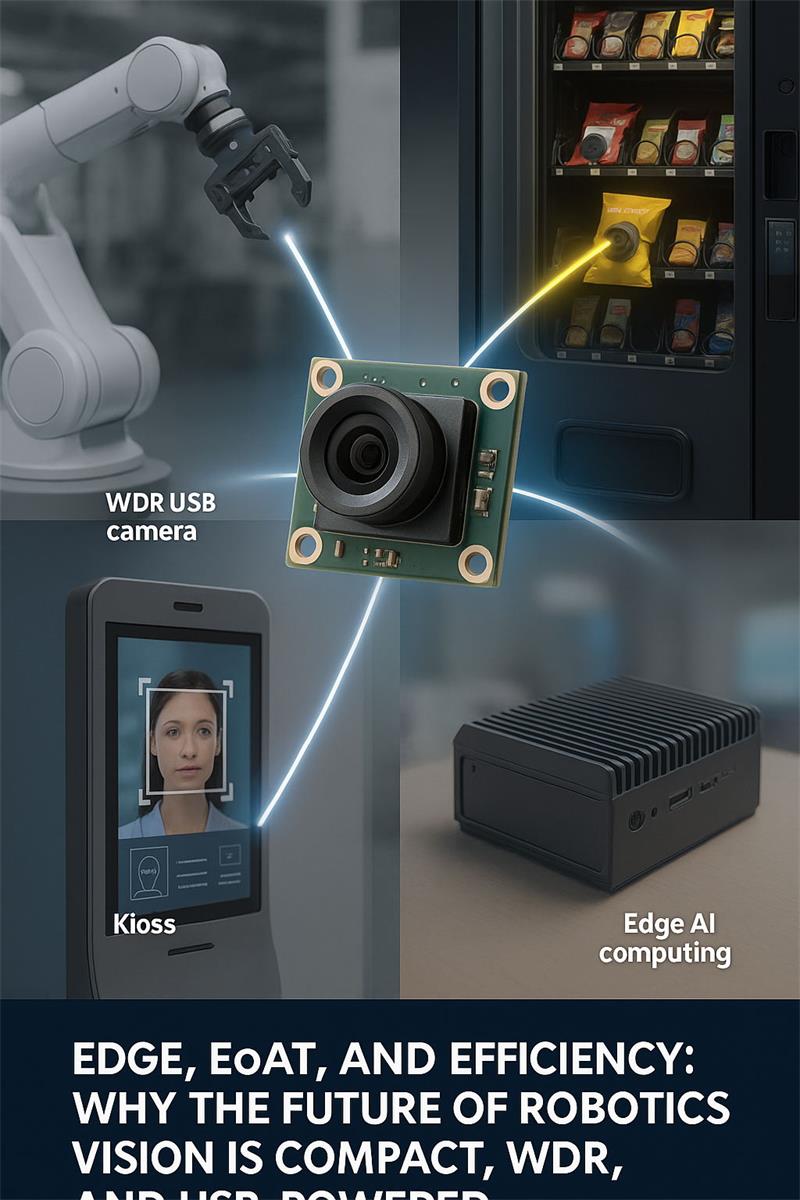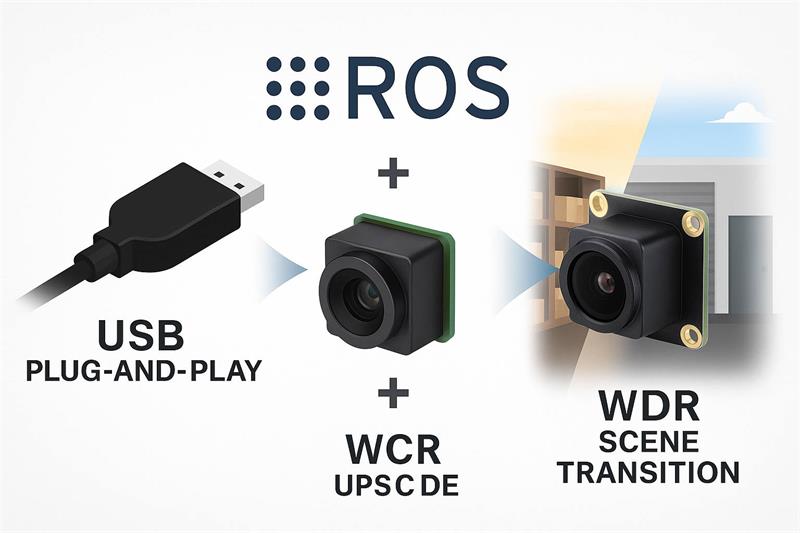
The era of intelligent, autonomous robotics is no longer a distant vision—it’s here. From smart vending machines to AMRs patrolling logistics centers, robotics and embedded vision systems are driving a new wave of automation across manufacturing, retail, and service industries.
Yet despite major advances in AI, compute power, and mechatronics, many projects still stall at one surprisingly simple point: the camera. Whether it’s a kiosk camera not working in sunlight, a backlight camera problem in an industrial hall, or a vending machine camera failing under mixed lighting, the issue isn’t intelligence—it’s visibility.
This article explores how next-generation micro USB camera modules with WDR and UVC compatibility are solving these bottlenecks—enabling faster deployment, seamless ROS integration, and robust real-world performance.
MIPI CSI-2 cameras promise compactness—but that comes at a cost. Engineers face endless debugging of proprietary drivers, EMI noise issues, and signal degradation over short cables. Integration often demands custom carrier boards and firmware modifications, making even simple projects drag on for weeks.
In short: MIPI equals hardware intimacy but development complexity—a tax robotics engineers can’t afford when timelines are tight.
Traditional GigE or USB3 Vision cameras deliver high image quality but are far too large and power-hungry for today’s embedded systems. They turn sleek AMRs into cable jungles and make End-of-Arm Tooling (EoAT) integration nearly impossible.
What modern engineers need is a camera that’s both compact and industrial, both plug-and-play and reliable under chaos.

The future belongs to form-factor freedom. A 15×15mm USB camera module isn’t just smaller—it’s transformational.
For EoAT applications, it means the vision module can be placed directly inside the gripper. Robots can now “see” exactly what they manipulate, enabling perfect alignment for micro-assembly or visual quality checks without offset calibration.
For AMRs and warehouse robots, multiple micro cameras can be discreetly embedded for 360° situational awareness. This compact camera for AMR not only saves space but also improves aerodynamic design and battery efficiency.
Even in self-service kiosks and vending machines, the reduced footprint allows designers to embed the UVC camera module for smart terminal behind slim bezels or glass panels—without sacrificing visual clarity.
Wide Dynamic Range (WDR) is no longer a luxury—it’s a necessity.
In simple terms, WDR allows the camera to see detail in both dark and bright areas, just like the human eye. Imagine an AMR moving from a dim aisle into the glaring sunlight of an open warehouse door. A normal camera is blinded; the barcode on a pallet becomes unreadable. A low light WDR USB camera, however, captures both the bright background and shadowed details simultaneously—ensuring reliability and zero downtime.
The same applies to vending machine camera recognition or kiosk face detection. Under strong sunlight or reflective surfaces, standard sensors fail. A WDR anti-glare USB camera module ensures accurate recognition, faster response, and better user experience, day or night.
Speed of integration defines success in robotics. The UVC (USB Video Class) standard removes weeks of driver development—allowing true plug-and-play operation on Linux, Windows, and Android.
Even more importantly, these cameras are ROS compatible USB cameras, instantly recognized by Robot Operating System environments. For developers, this means no more “camera not found” debugging marathons. Time-to-first-image drops from weeks to minutes, letting teams focus on AI and motion, not wiring and firmware.
When logistics startup AutoLogistics Inc. began building its AMRs for warehouse navigation, it initially chose a low-cost MIPI camera. The result? Frequent image washout near loading docks, unpredictable frame drops, and driver incompatibilities during ROS 2 integration.
Switching to a 15×15mm WDR USB camera solved all three issues instantly. The plug-and-play UVC interface worked seamlessly with ROS nodes. Integration time dropped by 85%, while barcode detection accuracy in mixed lighting rose 40%.
As their CTO summarized:
“We stopped troubleshooting the camera and started optimizing the robot. That single swap saved us two months in deployment.”
Today, AutoLogistics deploys over 200 AMRs using the same micro USB camera module with WDR, proving that compact form and industrial reliability can coexist.

What began as a robotics solution now scales across verticals.
Smart Vending and Retail: Embedded vision for self-service machines now uses the same USB WDR modules for product recognition and transaction validation. No more kiosk camera not working in sunlight.
Industrial Equipment Monitoring: Compact WDR cameras can be installed inside enclosures for thermal inspection, machinery alignment, and quality analysis.
AI Edge Computing: With UVC interface and compact size, they connect easily to NVIDIA Jetson, Raspberry Pi, and other AI boards—ideal for edge AI vision projects.
Security & Energy Infrastructure: STARVIS-based WDR sensors deliver unmatched low-light visibility, making them ideal for energy facilities and autonomous inspection drones.
This cross-domain flexibility means engineers can use one embedded vision platform for multiple markets, reducing supply chain complexity and ensuring consistent software integration.

The robotics and embedded vision industry is evolving beyond bulky cameras and fragile integration stacks. The future belongs to compact, intelligent, and interoperable components.
Three truths define this shift:
Miniaturization unlocks design freedom — enabling vision where it was once impossible.
WDR ensures reliability — solving the backlight camera problem and guaranteeing consistent performance in any lighting.
UVC and ROS compatibility accelerate innovation — allowing plug-and-play vision integration at industrial scale.
Whether your system is a warehouse AMR, a self-service kiosk, or a next-gen smart vending platform, the time to modernize your vision system is now.
Donot let vision be the bottleneck.
Request the datasheet for our 2MP 15×15mm WDR USB Camera Module or contact our engineers to discuss your next project:
https://www.okgoobuy.com/wdr-usb-camera-module-robotics-kiosks.htm